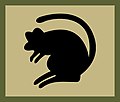| Detachment | Affiliation | Location | Postal Code |
|---|
| A Company [6] |
|---|
| A Company Headquarters | | | |
| Alamein Detachment | | 34 Dexter Way, Gateshead | NE10 9JJ |
| Inkerman Detachment | | 34 Dexter Way, Gateshead | NE10 9JJ |
| Blaydon Detachment | | Blaydon Bank, Blaydon-on-Tyne | NE21 4AU |
| Felling Detachment | | 34 Dexter Way, Gateshead | NE10 9JJ |
| Gateshead Detachment | | Elmgrove Terrace, Gateshead | NE8 4HX |
| Hebburn Detachment | | Victoria Road West, Hebburn | NE31 1BX |
| Jarrow Detachment | | Beech Street, Jarrow | NE32 5LD |
| Seaburn (Martin Leake) Detachment | | Dykelands Road, Seaburn | SR6 8DP |
| Northfield Gardens Detachment | | Northfield Gardens, South Shields | NE34 6HH |
| B Company |
|---|
| B Company Headquarters | | | |
| Alanbrooke Detachment | | Sunderland Road Army Reserve Centre, Horden | SR8 4NL |
| Annfield Plain Detachment | | Church Street Cadet Centre, Chatchgate, Stanley | DH9 8HE |
| Barnard Castle Detachment | | Stainton Camp, Barnard Castle | DH!2 8UJ |
| Birtley Detachment | | Birtley Land Cadet Centre, Birtley | DH2 LP |
| Boldon Detachment | | New Road, Boldon Colliery | NE35 9DZ |
| Chester-le-Street Detachment | | Picktree Lane Army Reserve Centre, Chester-le-Street | DH3 3SR |
| Frenchmans Fort Detachment | | Londonderry Hall, Dean Road, Westoe | NE33 4EF |
| Horden Detachment | | Sunderland Road Army Reserve Centre, Horden | SR8 4NL |
| Joseph Swan Academy Detachment | | Joseph Swan Academy, Saltwell Road South, Gateshead | NE9 6LE |
| Redhouse Detachment | | Rutherglen Road, Red House Estate, Sunderland | SR5 5LN |
| Shiney Road Detachment | | Herrington Burn YMCA, Herrington Burn, Houghton-le-Spring | DH4 4JW |
| Shotton Hall Detachment | | Shotton Hall Army Reserve Centre, Sunderland Road, Horden | SR8 4NL |
| Stanley Detachment | | Stanley Cadet Centre, High Street, Stanley | DH9 0PW |
| Sulgrave Detachment | | Stephenson Industrial Estate, Washington | NE37 9HR |
| Sunderland South Detachment | | Sunderland South Cadet Centre, Railway Row, Sunderland | SR1 3HE |
| Washington Detachment | | Washington Cadet Centre, Sulgrave Centre, Washington | NE37 3BJ |
| C Company [7] |
|---|
| C Company Headquarters | | Gilesgate Army Reserve Centre, Durham | DH1 1JR |
| Durham Detachment | | Gilesgate Armoury, Durham | DH1 1JR |
| Houghton le Spring Detachment | | 96 Newbottle Street, Houghton le Spring | DH4 4AJ |
| Ryhope Detachment | | Ryhope | DH4 4AJ |
| Seaham Detachment | | Tempest Place, Seaham | SR7 7BY |
| Ushaw Moor Detachment | | Station Road, Ushaw Moor | RH7 7PY |
| D Company [8] |
|---|
| D Company Headquarters | | | |
| Bishop Auckland Detachment | Rifles Regiment | Saint Andrews Road, Bishop Auckland | DL14 6RX |
| Churchill Detachment | Royal Corps of Signals [9] | Neasham Road, Darlington | DL1 4DF |
| Hummersknott Detachment | Royal Artillery | Edinburgh Drive, Darlington | DL3 8AR |
| Newton Aycliffe Detachment | Royal Electrical and Mechanical Engineers | Greenwell Road, Newton Aycliffe | DL5 4EW |
| Spennymoor Detachment | Rifles Regiment | Villiers Street, Spennymoor | DL16 6AL |
| Willington Detachment | Royal Army Medical Corps | Willington | DL15 0QF |
| CTC Stainton Detachment | Royal Dragoon Guards |
|


